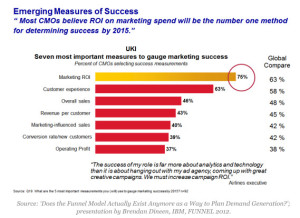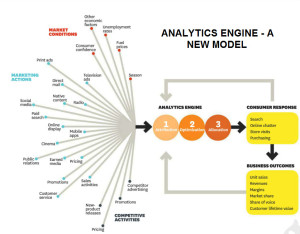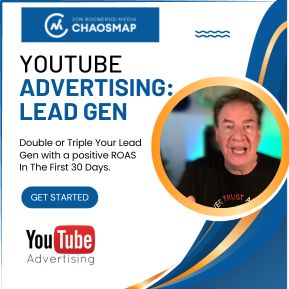The movement of technology and marketing to track your advertising analytics have progressed in ways many businesses don’t understand yet. Many still track activities by each media – TV, Radio, Print, etc.
Ads online are also tracked, but all of these media channels – independently.
A new approach
A new way of analyzing your data can be done through a set of principles and tools that can reveal wasted spends and lack of targeting opportunities. Some organizations will say that TV works well for them and base it on a “feeling” and “general trending”. Others, meanwhile – the more savvy – have ditched TV and now use YouTube instead. The latter is based on research, testing and findings of cost-reduction, but also in terms of heightened effectiveness in targeting and tracking.
Reallocation of budgets and ad dollars can be the smartest thing you do, but you must know how to do it.
The idea that sales data is correlated with a few dozen variables for your advertising is over.
The new capabilities discussed here use “Big Data Marketing” concepts and models that churns through terabytes of data and hundreds of variables in real time.
Based on a recent study from Harvard Business Review, a result of 10%-30% in improvement can be seen from your total marketing performance.
The common way of measuring analytics is one channel/campaign separated from the other. The result is a underestimation of revenues for social media marketing, for example — or an overestimation of PR and sponsored ads revenue.
Here are some of the areas of online digital analytics opportunities:
- Display Ads and Banners
- SEO – Organic Search
- TV
- Social Media
- Referral partners
- Public Relations
- Paid ads
There is a big opportunity in the digital analytics space – both for companies that create the tools, workflows and dashboards – but also for marketers to embrace new ways of thinking, and access to massive amounts of treasured data.
Here are 3 broader activities to consider:
- Attribution – quantifies the contribution of each element of advertising
- Optimization – uses predictive analytics tools to run scenarios for business planning.
- Allocation – redistributes resources across marketing activities in real time.
A infrastructure and process must be built, while developing a new culture, strategy and operations model for the business.
Applying the 1,2,3 from above can be seen in the graphic shown in a recent Harvard Business Review by Wes Nichols at Marketshare.
How to implement?
Large or small companies will benefit, and according to Mr. Nichols involves 5 specific steps:
ONE: Champion this effort. Start with the top level executives and sponsors. The buy-in is important and key to success. It will trickle-down from that vision and clarity of change.
TWO: Appoint a analytics-minded executive or director. This is a cross-functional position, reporting to Marketing and/or Financial department head.
THREE: Perform a complete audit of data inventories. Many data points that carry valuable weight can be hidden in the company, and they need to identified and consolidated.
FOUR: Don’t start with “too much, too soon”. Build out limited scope models and get some early wins, and to further develop buy-ins.
FIVE: Develop test plans, and as results come in – validate and test back into the models.
Shifting budgets as indicated earlier will be part of this process. Cross-media attribution is the gold key to success. This will different, and perhaps harder – but ultimately – will provide the most valuable results.  You may seek outside help if it grows too complex.
You may seek outside help if it grows too complex.
Next generation analytics for your business should be top priority. Finding the results and proving a stronger bottom line is obvious, but not often done right.
And, as Chief Marketing Officers (CMO) shared in a recent study by IBM, most of them believe that
ROI on marketing spend will be the number one method for determining success by 2015.
Jon Rognerud and Chaosmap work with Fortune 500 companies, associations and entrepreneurs to create digital traffic strategies that scale up members, customers, leads and sales with profitable returns. Mr. Rognerud wrote a best-selling book (Buy On Amazon), “The Ultimate Guide To Optimizing Your Website” (Entrepreneur). Connect directly here.









